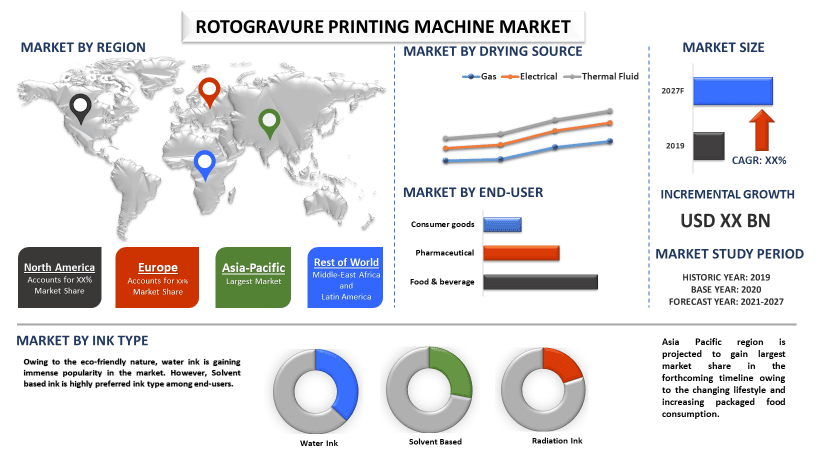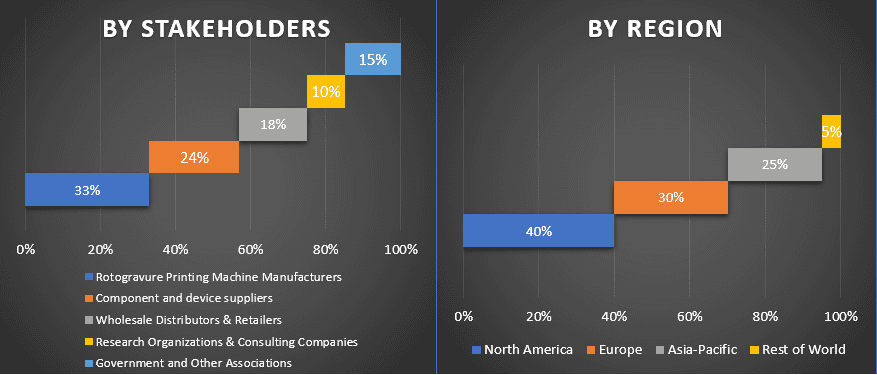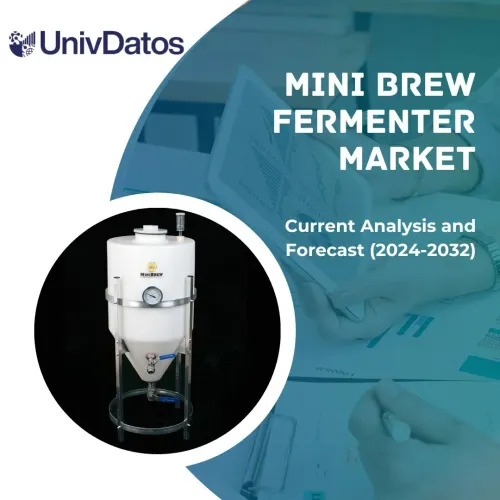- Home
- Chi siamo
- Settore
- Servizi
- Lettura
- Contattaci
Mercato delle macchine da stampa rotocalco: Analisi attuale e previsioni (2021-2027)
Enfasi sulla fonte di essiccazione (Gas, Elettrico, Fluido termico); tipo di inchiostro (Inchiostro a base d'acqua, Inchiostro a base solvente, Inchiostro a radiazione); substrato (Plastica, Foglio di alluminio, Carta e cartone); tipo di automazione (Macchina da stampa rotocalco automatica, Macchina da stampa rotocalco manuale); utente finale (Alimentare & Bevande, Farmaceutico, Beni di consumo, Altri); applicazione (Editoria, Etichette per imballaggio, Stampe di sicurezza, Stampa decorativa); Regioni e Paese

RICHIEDI PDF CAMPIONE GRATUITO
Si prevede che il mercato delle macchine da stampa rotocalco mostrerà un CAGR di circa il 3,2% nel periodo di previsione (2021-2027). La macchina da stampa rotocalco si riferisce a un sistema di stampa a rotocalco ad alta velocità avanzato che viene utilizzato principalmente per ottenere una stampa uniforme su film di diverse densità mantenendo la precisione. La macchina da stampa rotocalco è utile per ridurre gli sprechi in una certa misura, riducendo così i costi di imballaggio. Pertanto, questa macchina aiuta a migliorare la redditività dei produttori di imballaggi. A causa dello stile di vita frenetico, la maggior parte dei consumatori sta gradualmente spostando la propria preferenza verso punti vendita al dettaglio organizzati come i supermercati, il che contribuisce ulteriormente alla crescita del mercato. Con l'incremento dell'uso di materiale plastico/polietilene per l'imballaggio di vari prodotti di consumo, tra cui pane, sapone, tè, oli commestibili, latte, snack, ecc., la domanda di macchine da stampa rotocalco è in aumento vertiginoso, influenzando così positivamente la crescita del mercato.
Approfondimenti presentati nel rapporto
"Tra i tipi di inchiostro, il segmento a base di solvente ha detenuto una quota di mercato significativa nel 2020"
In base al tipo di inchiostro, il mercato si suddivide in inchiostro a base d'acqua, a base di solvente e a radiazione. Di questi tre, il mercato globale delle macchine da stampa rotocalco è dominato dall'inchiostro a base di solvente, mentre si prevede che l'inchiostro da stampa a base d'acqua sarà il settore in più rapida crescita. Il fluido vettore a base di olio è uno dei componenti principali dell'inchiostro a solvente, insieme a colla e pigmenti. Poiché l'inchiostro a base di solvente è costituito da materiali non assorbenti, è ideale per la stampa su oggetti che devono essere utilizzati all'esterno. Gli inchiostri a base di solvente sono anche naturalmente resistenti all'acqua e ai graffi.
Tuttavia, poiché gli inchiostri rotocalco sono a base chimica, gli inchiostri a base d'acqua stanno diventando sempre più popolari a causa dei rischi per la salute associati agli inchiostri rotocalco. Diverse normative ambientali sull'inchiostro a base di solvente e la volatilità dei prezzi delle materie prime sono i fattori che potrebbero limitare l'uso dell'inchiostro a base di solvente e alimentare la preferenza per l'inchiostro a base d'acqua.
"Tra gli utenti finali, il settore alimentare e delle bevande ha acquisito la quota di mercato più ampia"
In base all'utente finale, il mercato si suddivide in alimenti e bevande, prodotti farmaceutici e beni di consumo. Tra questi segmenti, il settore alimentare e delle bevande rappresenta la quota maggiore del mercato globale delle macchine da stampa rotocalco. Il crescente consumo di alimenti e bevande confezionati in varie regioni è il fattore più importante che contribuisce alla crescente domanda di macchine da stampa rotocalco nel settore dell'imballaggio. Insieme a questo, l'elevata qualità dell'immagine, l'alta velocità e la minore partecipazione della manodopera sono altri fattori cruciali che spingono l'adozione della macchina da stampa rotocalco nell'industria alimentare e delle bevande. Inoltre, si prevede che la crescente tendenza alla pubblicità di questi prodotti alimentari e bevande promuoverà l'uso della macchina da stampa rotocalco nell'industria alimentare e delle bevande, contribuendo così alla crescita complessiva del mercato.
"L'Asia Pacifico dominerà il mercato durante il periodo di previsione"
Per una migliore comprensione dell'adozione di mercato della macchina da stampa rotocalco, il mercato viene analizzato in base alla sua presenza mondiale in paesi come Nord America (Stati Uniti, Canada, Messico e Resto del Nord America), Europa (Germania, Francia, Italia, Regno Unito e Resto d'Europa), Asia-Pacifico (Cina, Giappone, India, Corea del Sud, Resto dell'Asia-Pacifico) e Resto del Mondo. Nel 2020, la regione Asia Pacifico deteneva la quota di mercato più alta nel mercato globale delle macchine da stampa rotocalco. Alcuni dei principali attori che operano sul mercato sono J M Heaford Ltd., Bobst Group SA, Windmoeller & Hoelscher Corporation, KKA Gmbh, ROTATEK S.A, Uteco Converting SpA, Shaanxi Beiren Printing Machinery Co., Ltd., Hsing Wei Machine Industry CO.LTD, QUEEN’S MACHINERY CO., LTD, Pelican Rotoflex Pvt Ltd.
Motivi per acquistare questo rapporto:
- Lo studio include l'analisi delle dimensioni e delle previsioni del mercato convalidate da esperti chiave del settore autenticati
- Il rapporto presenta una rapida rassegna delle prestazioni complessive del settore a colpo d'occhio
- Il rapporto copre un'analisi approfondita dei principali concorrenti del settore con un focus primario sulle principali finanze aziendali, il portafoglio prodotti, le strategie di espansione e gli sviluppi recenti
- Esame dettagliato dei fattori trainanti, dei vincoli, delle tendenze chiave e delle opportunità prevalenti nel settore
- Lo studio copre in modo completo il mercato in diversi segmenti
- Analisi approfondita a livello regionale del settore
Opzioni di personalizzazione:
Il mercato delle macchine da stampa rotocalco può essere ulteriormente personalizzato in base alle esigenze o a qualsiasi altro segmento di mercato. Inoltre, UMI comprende che potresti avere le tue esigenze aziendali, quindi sentiti libero di connetterti con noi per ottenere un rapporto che si adatti completamente alle tue esigenze.
Indice
L'analisi del mercato storico, la stima del mercato attuale e la previsione del futuro del mercato delle macchine da stampa rotocalco sono state le tre principali fasi intraprese per creare e analizzare la domanda e le vendite di macchine da stampa rotocalco nelle principali regioni a livello globale. È stata condotta un'esaustiva ricerca secondaria per raccogliere i dati storici del mercato e stimare le dimensioni attuali del mercato. In secondo luogo, per convalidare queste informazioni, sono state prese in considerazione numerose scoperte e ipotesi. Inoltre, sono state condotte esaustive interviste primarie con esperti del settore lungo tutta la catena del valore del settore. Dopo l'assunzione e la convalida dei dati di mercato attraverso interviste primarie, abbiamo impiegato un approccio bottom-up per prevedere le dimensioni complete del mercato. Successivamente, sono stati adottati metodi di suddivisione del mercato e di triangolazione dei dati per stimare e analizzare le dimensioni del mercato dei segmenti e dei sottosegmenti a cui appartiene il settore. La metodologia dettagliata è spiegata di seguito.
Richiedi maggiori dettagli sulla metodologia di ricerca
Analisi delle dimensioni storiche del mercato
Passaggio 1: studio approfondito delle fonti secondarie:
È stato condotto uno studio secondario dettagliato per ottenere le dimensioni storiche del mercato delle macchine da stampa rotocalco attraverso fonti interne aziendali come relazioni annuali e bilanci, presentazioni sulle prestazioni, comunicati stampa, ecc., e fonti esterne tra cui riviste, notizie e articoli, pubblicazioni governative, pubblicazioni dei concorrenti, rapporti di settore, database di terze parti e altre pubblicazioni credibili.
Passaggio 2: segmentazione del mercato:
Dopo aver ottenuto le dimensioni storiche del mercato delle macchine da stampa rotocalco, abbiamo condotto un'analisi secondaria dettagliata per raccogliere informazioni storiche sul mercato e condividere per diversi segmenti e sottosegmenti per le principali regioni. I principali segmenti inclusi nel rapporto sono la fonte di essiccazione, il tipo di inchiostro, il substrato, il tipo di automazione, l'utente finale e l'applicazione. Sono state condotte ulteriori analisi a livello regionale per valutare la domanda complessiva di macchine da stampa rotocalco nel contesto globale.
Passaggio 3: analisi dei fattori:
Dopo aver acquisito le dimensioni storiche del mercato di diversi segmenti e sottosegmenti, abbiamo condotto un'analisi dettagliata dei fattori per stimare le dimensioni attuali del mercato. Inoltre, abbiamo condotto un'analisi dei fattori utilizzando variabili dipendenti e indipendenti come l'aumento del consumo di alimenti e bevande confezionati. Sono state analizzate le tendenze storiche e il loro impatto di anno in anno sulle dimensioni e sulla quota di mercato. È stato anche studiato approfonditamente lo scenario della domanda e dell'offerta.
Stima e previsione delle dimensioni attuali del mercato
Dimensionamento del mercato attuale: sulla base di informazioni utili ricavate dai 3 passaggi precedenti, siamo giunti alle dimensioni attuali del mercato, ai principali attori del mercato e alle quote di mercato dei segmenti e delle società. Tutte le suddivisioni percentuali richieste e le suddivisioni del mercato sono state determinate utilizzando l'approccio secondario sopra menzionato e sono state verificate attraverso interviste primarie.
Stima e previsione: per la stima e la previsione del mercato, sono stati assegnati pesi diversi a diversi fattori, tra cui driver e tendenze, vincoli e opportunità disponibili per le parti interessate. Dopo aver analizzato questi fattori, sono state applicate tecniche di previsione pertinenti, ovvero l'approccio bottom-up, per arrivare alla previsione di mercato fino al 2027 per diversi segmenti e sottosegmenti nelle principali regioni a livello globale. La metodologia di ricerca adottata per stimare le dimensioni del mercato comprende:
- Le dimensioni del mercato del settore, in termini di valore (US$) e la domanda di macchine da stampa rotocalco nelle principali regioni a livello globale
- Tutte le quote percentuali, le suddivisioni e le ripartizioni dei segmenti di mercato e dei sottosegmenti
- I principali attori nel mercato delle macchine da stampa rotocalco in termini di prodotti offerti. Inoltre, le strategie di crescita adottate da questi attori per competere nel mercato in rapida crescita.
Convalida delle dimensioni e della quota di mercato
Ricerca primaria: sono state condotte interviste approfondite con i Key Opinion Leader (KOL) tra cui Top Level Executives (CXO/VP, Sales Head, Marketing Head, Operational Head e Regional Head, Country Head, ecc.) nei principali paesi. I risultati della ricerca primaria sono stati quindi riassunti ed è stata eseguita un'analisi statistica per dimostrare l'ipotesi dichiarata. Gli input della ricerca primaria sono stati consolidati con i risultati secondari, trasformando così le informazioni in informazioni utili.
Suddivisione dei partecipanti primari nelle diverse regioni

Ingegneria del mercato
La tecnica di triangolazione dei dati è stata impiegata per completare la stima complessiva del mercato e per arrivare a numeri statistici precisi di ciascun segmento e sottosegmento del mercato delle macchine da stampa rotocalco. I dati sono stati suddivisi in diversi segmenti e sottosegmenti dopo aver studiato vari parametri e tendenze nelle aree della fonte di essiccazione, del tipo di inchiostro, del substrato, del tipo di automazione, dell'utente finale, dell'applicazione e delle regioni.
L'obiettivo principale dello studio sul mercato delle macchine da stampa rotocalco
Le tendenze attuali e future del mercato delle macchine da stampa rotocalco sono individuate nello studio. Gli investitori possono ottenere informazioni strategiche per basare la propria discrezione per gli investimenti dall'analisi qualitativa e quantitativa eseguita nello studio. Le tendenze di mercato attuali e future determinerebbero l'attrattiva complessiva del mercato a livello regionale, fornendo una piattaforma per il partecipante industriale per sfruttare il mercato non sfruttato a vantaggio del vantaggio del first-mover. Altri obiettivi quantitativi degli studi includono:
- Analizzare le dimensioni attuali e previste del mercato delle macchine da stampa rotocalco in termini di valore (USD). Inoltre, analizzare le dimensioni attuali e previste del mercato di diversi segmenti e sottosegmenti del settore
- I segmenti nello studio includono la fonte di essiccazione, il tipo di inchiostro, il substrato, il tipo di automazione, l'utente finale, l'applicazione e le regioni
- Analisi definita del quadro normativo per l'industria delle macchine da stampa rotocalco
- Analizzare la catena del valore coinvolta con la presenza di vari intermediari, insieme all'analisi dei comportamenti dei clienti e dei concorrenti relativi al settore
- Analizzare le dimensioni attuali e previste del mercato delle macchine da stampa rotocalco in tutto il mondo. Le principali regioni analizzate nel rapporto includono Nord America (Stati Uniti, Canada, Messico, resto del Nord America); Europa (Germania, Regno Unito, Francia, Italia, resto d'Europa); Asia-Pacifico (Cina, Giappone, India, Corea del Sud, resto dell'Asia-Pacifico); e Resto del mondo. Definire e analizzare il panorama competitivo del settore delle macchine da stampa rotocalco e le strategie di crescita adottate dagli attori del mercato per sostenersi nel mercato in rapida crescita
- Analisi approfondita a livello regionale del settore
Correlati Report
I clienti che hanno acquistato questo articolo hanno acquistato anche










